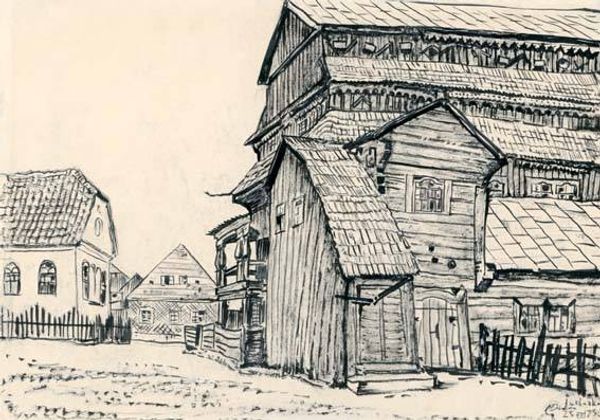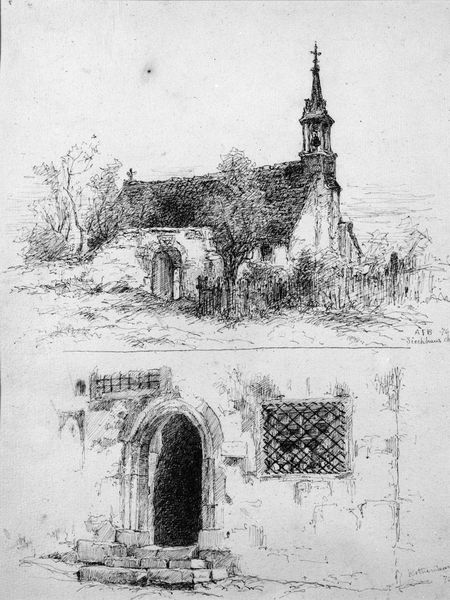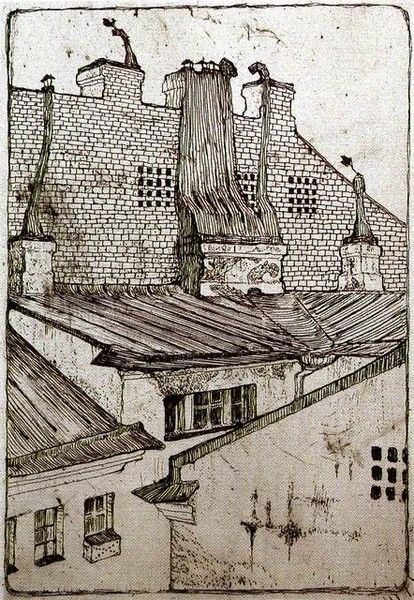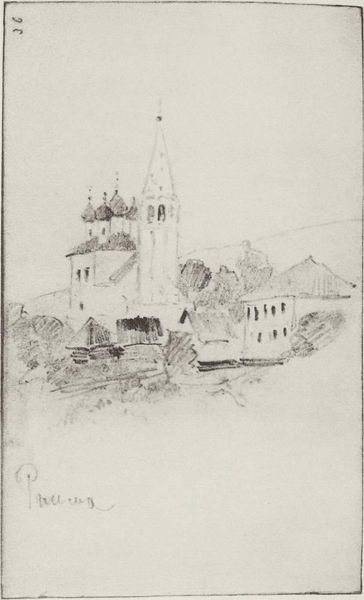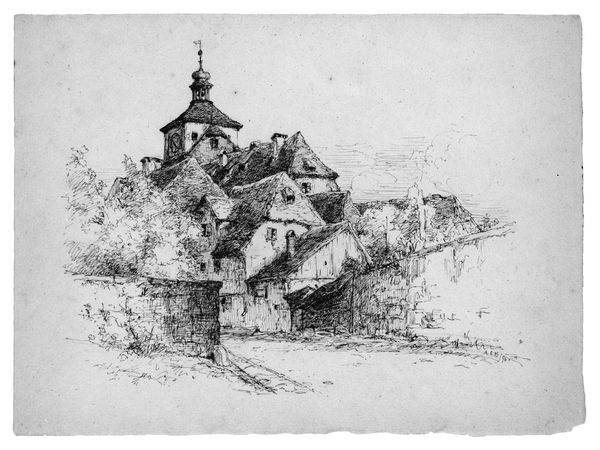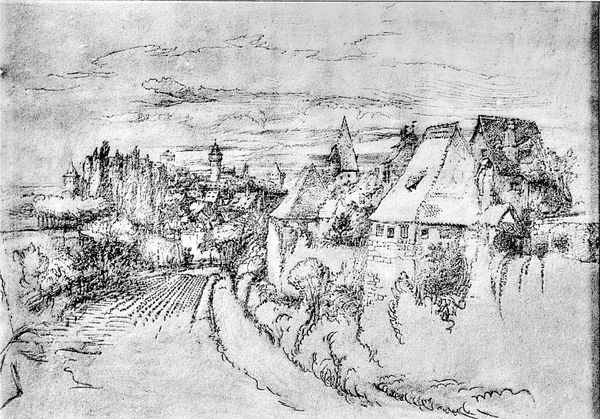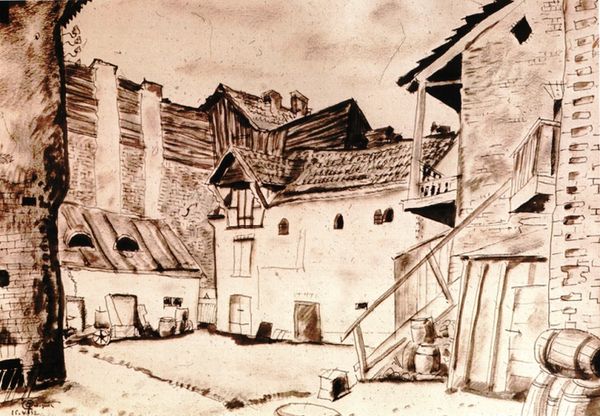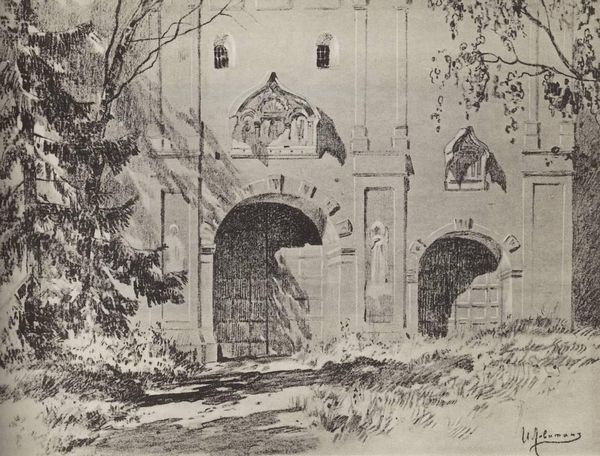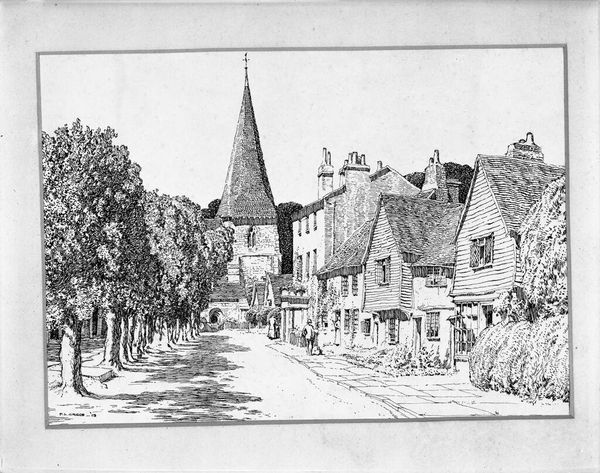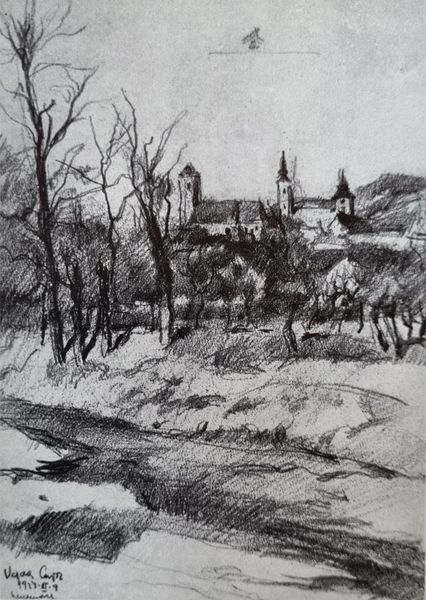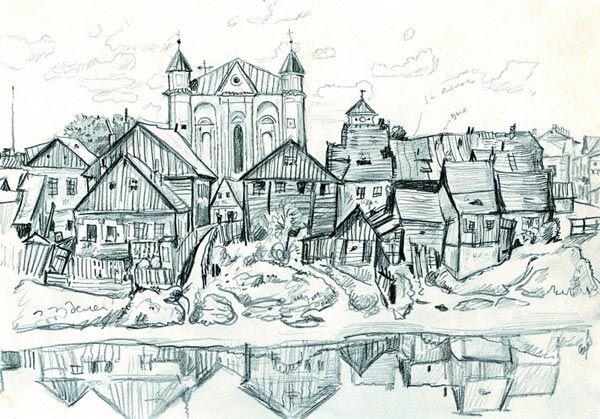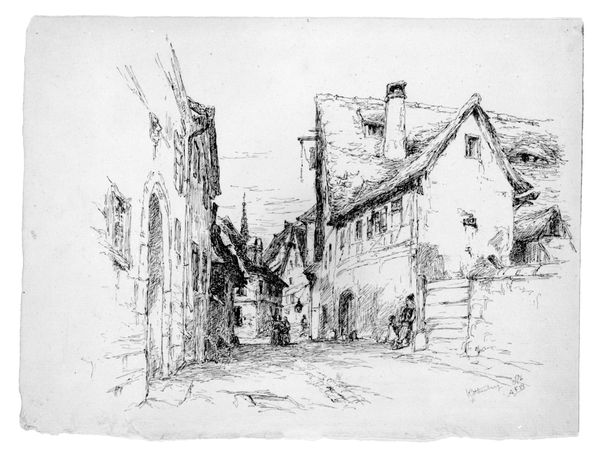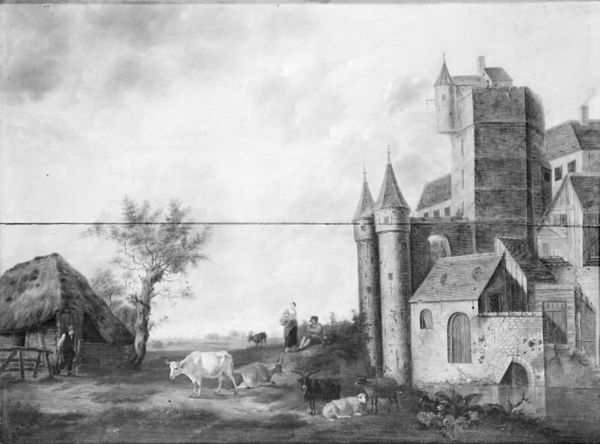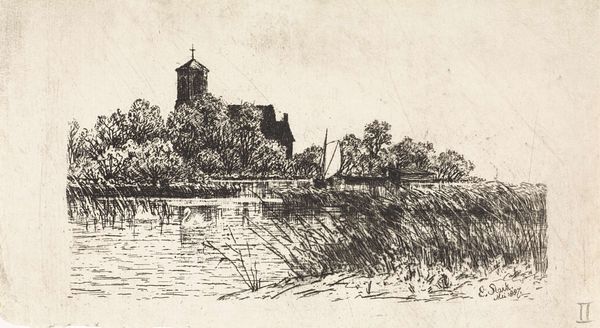
drawing, ink, architecture
#
pen and ink
#
landscape illustration sketch
#
drawing
#
medieval
#
pen drawing
#
mechanical pen drawing
#
pen illustration
#
pen sketch
#
landscape
#
ink
#
pen-ink sketch
#
arch
#
pen work
#
architecture
Dimensions: 50 x 37 cm
Copyright: Mstislav Dobuzhinsky,Fair Use
Editor: We're looking at "A Church in Seda," a pen and ink drawing from 1933 by Mstislav Dobuzhinsky. There's a sense of quiet, almost somber dignity in this landscape. The church seems very old, very rooted. What historical contexts illuminate this artwork for you? Curator: Well, the date itself, 1933, is significant. This was a period of immense upheaval and anxiety across Europe. Dobuzhinsky, a Russian artist who had emigrated, was observing the landscape with a perspective shaped by loss and displacement. Editor: Loss and displacement? How does that inform our understanding? Curator: Look at the way he renders the church, isolated and almost vulnerable despite its imposing structure. This isn't just a picture of a church; it's an image freighted with meaning about cultural continuity and the fragility of tradition in a rapidly changing world. The use of pen and ink – a relatively accessible and portable medium – might reflect the artist’s own transient situation, creating art under socio-political constraints. Editor: So, the medium itself contributes to the historical narrative? Curator: Precisely. Think about the role of religious institutions in preserving national identity, particularly during periods of political instability. Does the way Dobuzhinsky depict it feel celebratory, or something more muted? Editor: I see what you mean. It’s not glorifying; it's more like a quiet, respectful acknowledgement. Maybe even a bit melancholic. Curator: The power of the image resides in this careful balance. Dobuzhinsky reminds us that even seemingly timeless structures are embedded in specific historical moments and power structures, impacting both their creation and reception. Editor: I never considered how much the socio-political climate influences something like a landscape drawing. That's incredibly insightful. Curator: Art always exists in dialogue with the world around it. Understanding that dialogue is key to appreciating its full significance.
Comments
No comments
Be the first to comment and join the conversation on the ultimate creative platform.
